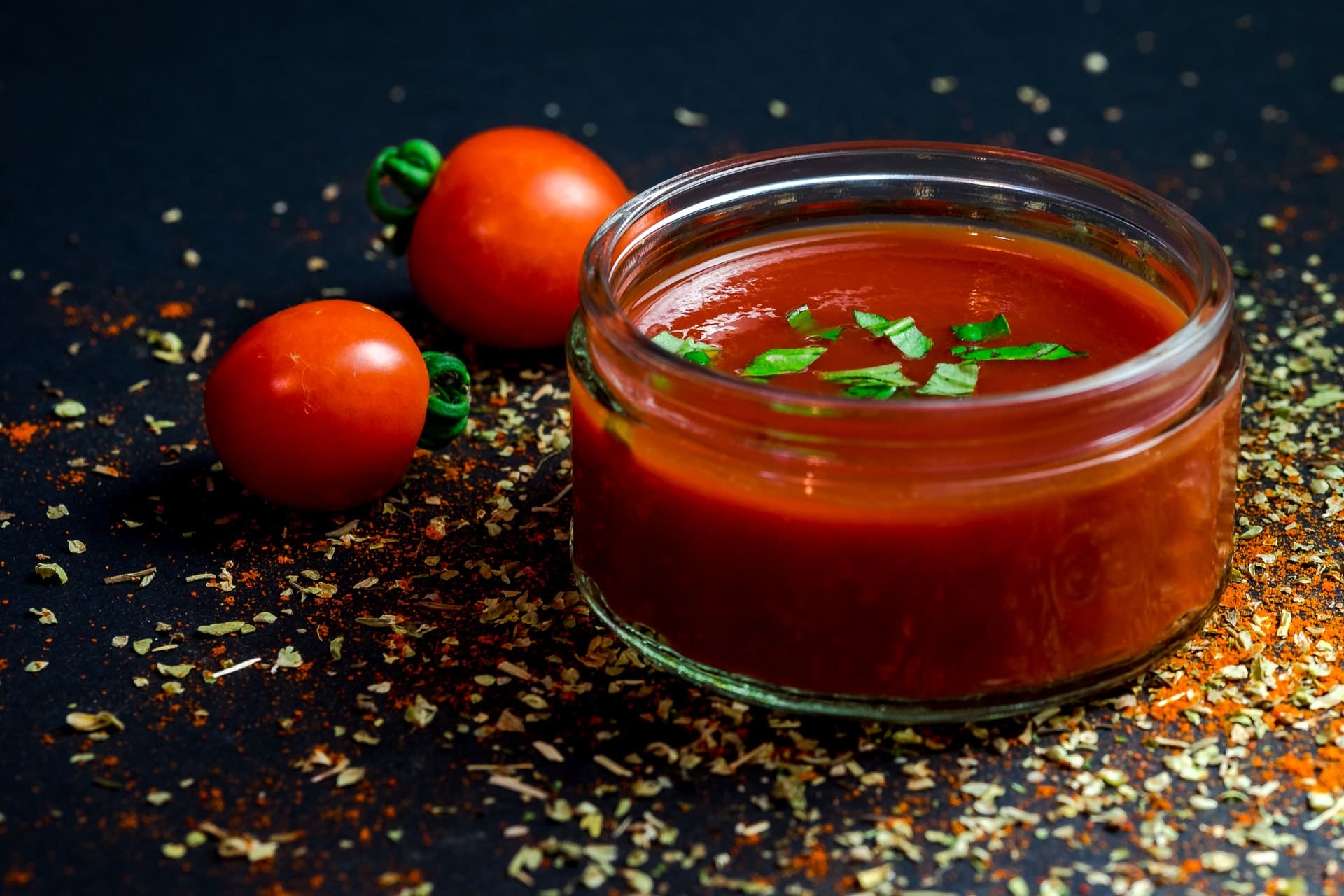In the battle between the tomato paste vs. sauce, we have to look at the recipe’s function to ensure we are using the right ingredient. So if you are confused with a tomato sauce vs. paste, read today’s blog, and you will know the difference between them.
The Secret Behind the Intense Flavor of Tomato Pastes
Let’s get down to business: we have absolutely no confusion when we use stuff like the tasty Mexican tomato sauce, but then we stumble upon the tomato paste. Everything we know about sauces grinds to a halt. What gives? To answer this question, let us identify how tomato sauces and tomato pastes are made. Tomato pastes are like globs of tomato, and they can have ten times the flavor and color compared to sauces. What makes them so dense in flavor?
The secret is in how they were made. Tomato pastes are made from whole tomatoes that are cooked and reduced until the tomatoes become a paste. The seeds and excess skins that have not disintegrated are removed, and the manufacturers keep cooking the tomatoes to create more paste. So in terms of concentration, you need tomato paste. For regular pasta, sauces are ideal.
The natural density of tomato paste explains why they come in smaller packages compared to tomato sauces. You will only need a smaller quantity to flavor dishes compared to sauces. There are also brands of tomato paste that are marked as being doubly concentrated. These brands will give your dishes an even deeper tomato flavor.
There are also brands with additional seasonings. Manufacturers commonly use herbs like oregano, garlic, and basil to make their tomato pastes even more useful in the kitchen. These additional ingredients ensure that the tomato paste’s flavor profile is stable, and so is your recipe. However, expert cooks and chefs like adding additional seasoning and flavorings themselves, so it’s common for intermediate and expert cooks to buy unseasoned or unflavored tomato paste instead.
Tomato pastes stand out in terms of flavor because of the intense caramelization during the manufacturing process.
Can You Substitute Tomato Sauce for Tomato Paste in Cooking?
Technically speaking, yes, you can. If you are preparing a stew, sauce, or baked dish, you can use tomato sauce instead of tomato paste if the latter is not available. However, bear in mind that in terms of flavor intensity, tomato sauces barely hold water against tomato pastes because they do not reduce the way tomato pastes are.
In the end, you may have to use double the quantity of sauce to get to the flavor level of tomato pastes.
The ratio is three tbsp. of sauce as a substitute of one tbsp. of paste. Of course, you will have a problem with the sauce’s volume eventually, so what you can do is set the fire on low and allow the sauce to reduce. Tomato paste is commonly required for recipes that require a deeper tomato flavor.
If you don’t have tomato sauce, the next best thing is canned whole or diced tomatoes. Be sure to drain all the water first before using it and then use enough to reduce it to a sauce. The ratio is the same for the substitution: you need twice as much canned tomato for every tomato paste quantity.
To make the best tomato sauce from canned tomato, drain all of the liquid from the can and pour the tomatoes into a food processor. Pour the whirred tomatoes into a pan and cook them down a little to remove the excess moisture. Cook the tomatoes until a sauce-like consistency is finally achieved. This process is usually more comfortable with crushed tomatoes, so check your pantry if you happen to have crushed tomatoes.
There are two kinds of homemade sauces. The lighter-tone sauces are commonly used for pasta and other dishes. When you cook down a sauce, so it gets a browner consistency; that’s perfect for jarred sauces.
Tomato Paste: The Nutritional Powerhouse Compared to Tomato Sauce
Due to its higher density and concertation, tomato paste has higher nutritional values than tomato sauce, canned tomato, and fresh tomato. A single tomato paste serving will always have more calories, carbohydrates, and trace nutrients than the tomato sauce version.
The difference is often three times higher. For example, one serving of tomato paste has 1,014 potassium, while the tomato sauce category’s equivalent is 331 mg of potassium. Tomato paste can provide 36% RDA for vitamin A while tomato sauce can only provide 8% RDA for vitamin A.
Maximize Your Tomato Paste with This Quick and Easy Tomato Sauce Recipe!
Tomato paste can successfully be used to create a tomato sauce for any kitchen application.
Combine one cup of water for every one cup of tomato paste. Adjust the concentration depending on the demands of the recipe and how much tomato flavor you need. Also, be sure to season the dish before creating more tomato sauce not to waste your tomato paste.
To bring out the best tomato flavor, caramelize some onion and garlic before adding the newly created tomato sauce. Season and taste to find out what you still need to add to make the sauce taste better.
How Can I Thicken Tomato Sauce Without Tomato Paste?
The easiest way to thicken the sauce is by adding roux or some cornstarch. Make the adjustments slowly so you won’t over thicken the sauce.
Unleashing the Power of Tomato Flavor: The Benefits of Having Both Tomato Sauce and Tomato Paste at Home
There are so many methods to get the right tomato flavor and consistency in dishes. Having both tomato sauce and tomato paste at home will ensure that you can make the proper adjustments to your recipes whenever you need to. Knowing the right concentration of tomato paste to use will also ensure that you will get the proper flavors right.

